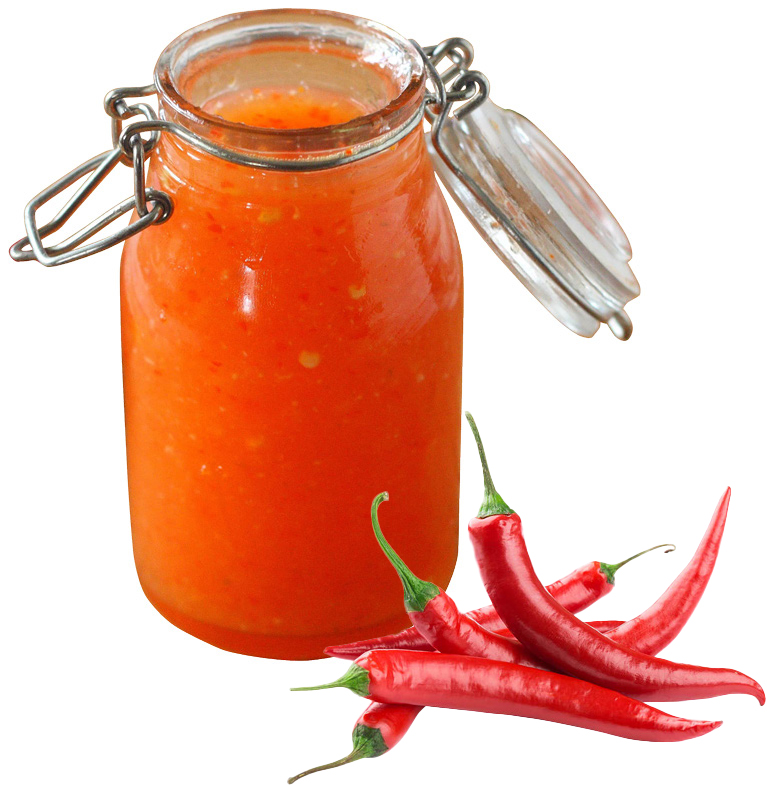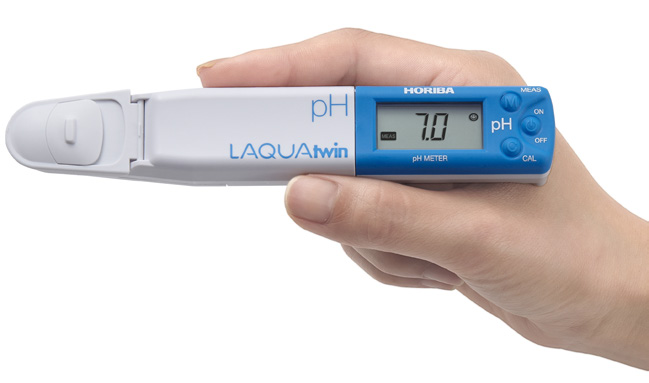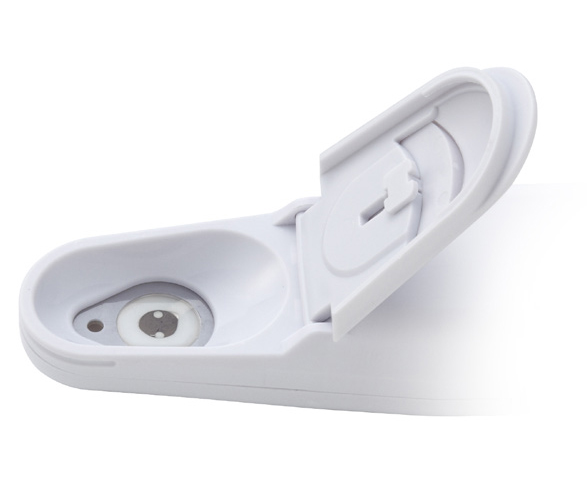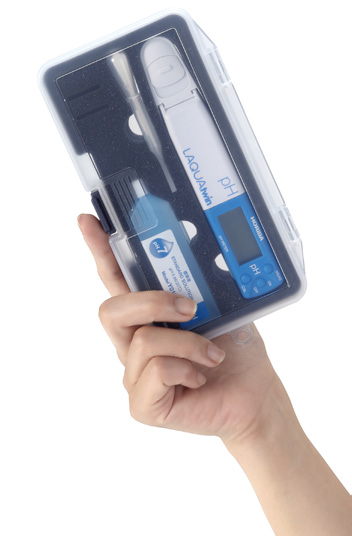Measuring Salt Content in Chili Sauce
Chili sauces may contain high amount of salts that increase chances of kidney and heart diseases. To measure the salt content in chili sauce, simply dilute a weighed sample with distilled or deionized water and then place some drops onto the sensor of LAQUAtwin Salt-11 pocket meter. The meter measures the salt content accurately and displays the result in either percentage (%) or parts per thousand (ppt) in just a few seconds.




Introduction
Chili sauce is a popular condiment that adds spice and flavour to food. It may be hot, sweet, or a combination thereof, and may have a thicker texture and viscosity compared to that of hot sauces. The ingredients of chili sauces vary, but typically include cooked chili peppers, vinegar, sugar, salt and sometimes red tomato. Some chili sauces available commercially are loaded with salt and other preservatives that can be damaging to your health.
Salt, chemically known as sodium chloride (NaCl), is a commonly used seasoning ingredient that serves as flavour enhancer and preservative in packaged or processed foods. It aids in balancing sweetness and suppressing bitterness. It also keeps the growth of pathogenic organisms at bay. Most bacteria, fungi, and other potentially pathogenic organisms cannot survive in a highly salty environment. Such environment is hypertonic, which will dehydrate any living cell causing it to die or temporarily inactivated.
The LAQUAtwin Salt-11 pocket meter offers fast, simple, and easy way of measuring salt content in packaged or processed foods such as chili sauces. This waterproof pocket meter measures the conductivity value of a sample and converts it to salinity value with selected seawater or sodium chloride (NaCl) calibration curve in the meter. The reading on the backlit LCD can be expressed as percentage (%) or parts per thousand (ppt). The replaceable sensor is designed with small sample well, which is embedded with two titanium metal electrodes coated with platinum black. This unique sensor can hold and measure micro-volume sample as little as 0.12ml.
Method
Meter Set-up and Calibration
Select the desired measurement unit and calibration curve combination in the meter settings - either % NaCl or ppt NaCl. Calibrate the meter according to manufacturer’s instructions using 0.5% (5ppt) and 5% (50ppt) NaCl standards that come with the kit.
Sample Preparation and Measurement
- Weigh a portion of the chili sauce and add distilled or deionized water.
- Example: 5 to 20 grams of chili sauce diluted to 100 ml or grams with DI water in a volumetric flask.
- Mix the diluted sample thoroughly.
- Using a dropper, place some drops of diluted sample onto the sensor.
- Record the stable reading.
Chili sauce should be diluted with distilled or deionized water to liberate the salt. The reading of the diluted sample should fall within the calibrated measurement range of the meter. To obtain accurate results, a uniform temperature should be maintained for the standards and samples.
After measurement, clean the sensor with detergent and warm water. If there are still sample residues or stains after cleaning, place some drops of household bleach (≤5% sodium hypochlorite) onto the sensor and leave it for 5 to 30 minutes. Rinse the sensor with clean water and blot dry with soft tissue. For more information on maintenance, refer to Technical Tip 3: LAQUAtwin Conductivity Sensor Maintenance Procedures.
.png)
.png)
Results and Benefits
Chili sauces may contain varying amounts of salt. Salt is soluble in water. It contains 40% sodium (Na), which is a mineral required by the body in small amount for maintaining blood pressure and fluid balance as well as transmitting nerve impulses. Besides salt, sodium is also found in monosodium glutamate (MSG), baking soda, and baking powder. Too much sodium can increase blood pressure and damage kidneys.
For packaged or processed foods, sodium is listed as milligrams (mg) per serving as well as per 100g on the nutrition information panel of the label, rather than salt. Table 1 shows the measurement results of chili sauce with LAQUAtwin Salt-11 pocket meter.
To calculate the amount of sodium from salt (NaCl) reading obtained with LAQUAtwin Salt-11 pocket meter, use the equations in Table 2. Refer to the values in Table 1 to follow the sample calculations. Note that the ppt NaCl reading is not indicated in Table 1.
According to the National Health Group Pharmacy in Singapore, adults should limit the amount of salt to one teaspoon per day, which is about 5g of salt or 2g of sodium. To ensure that you are not taking more than that amount, always check the amount of sodium per serving on the nutrition information panel of your chili sauce and other packaged or processed food. If that information is not available, simply perform a quick salt test with LAQUAtwin Salt-11 pocket meter.
References And Suggested Readings
- Chili Sauce. Wikipedia. https://en.wikipedia.org/wiki/Chili_sauce
- National Healthcare Group Pharmacy. All About Salt. https://www.pharmacy.nhg.com.sg/All_About_Salt/

LAQUAtwin: the only meters with flat sensor technology.
HORIBA’s highly-sensitive, flat sensor technology opens up new possibilities for sampling and sample types. Only a small amount of sample is required, so you can easily sample in situ without the need for beakers or other labware. Sensors are easily replaced as required.

Calibrate and measure at the touch of a button — the smiley face will tell you when the result can be read.

LAQUAtwin is fully waterproof and dustproof.
The meter and sensor are fully waterproof* and dustproof, so you can take it anywhere.
* IP67 rated. Will withstand immersion for 30 minutes at 1 m. Not suitable for underwater use.
Carry case comes as standard for handy portability.
The compact carry case contains everything you need for your measurements, including the standard solution and sampling sheets.

